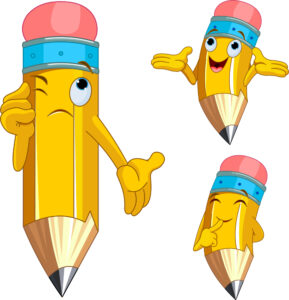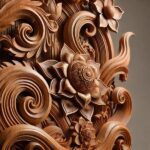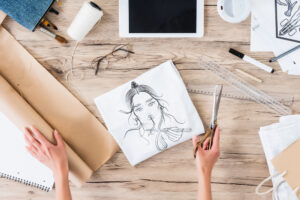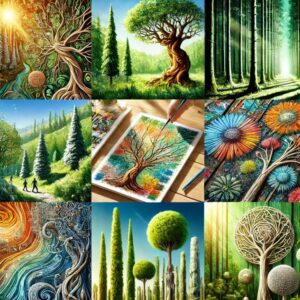
Introduction: The Timeless Allure of Pencil Art
Pencil art is one of the oldest and most accessible forms of visual expression. With just a simple pencil and paper, artists can create depth, light, and emotion that captivate the human eye. Whether you’re sketching portraits, landscapes, or imaginative scenes, pencil art offers an intimate connection between your hand, your thoughts, and your vision.
Mastering pencil art isn’t just about learning to draw lines—it’s about learning to see. Through the careful study of shapes, shadows, and subtle tonal variations, an artist can breathe life into flat surfaces. In this guide, we’ll explore 5 powerful techniques for stunning realism in pencil art that both beginners and advanced artists can apply to elevate their craft.
1. Mastering Line Control in Pencil Art
The foundation of pencil art lies in the line. Each stroke—whether light or bold—creates structure, defines edges, and shapes the subject. To achieve precision and consistency, it’s essential to control both pressure and movement.
-
Light Touch: Use minimal pressure to sketch outlines and guidelines. A 2H or 3H pencil works well for this stage.
-
Varied Pressure: For expressive lines, alternate between gentle and firm strokes to achieve dynamic flow.
-
Consistent Direction: Avoid random cross-hatching unless intentional; instead, follow the contours of your subject.
Professional artists often practice repetitive line drills to develop muscle memory. Smooth, consistent lines help in achieving clarity and proportion in any pencil art composition.
2. Shading Techniques That Add Realistic Depth
Shading transforms flat shapes into three-dimensional forms. In pencil art, light and shadow define realism. Understanding gradients—the transition between dark and light tones—is the key to capturing depth.
Common Shading Methods:
-
Hatching: Drawing closely spaced parallel lines to create tone.
-
Cross-Hatching: Layering lines in intersecting directions for deeper shadows.
-
Blending: Using a blending stump, tissue, or finger to smooth transitions.
-
Stippling: Creating texture with small, deliberate dots.
The secret lies in observation. Study your light source and how it interacts with surfaces. Shadows should never be pure black, and highlights should retain subtle texture. Balance contrast for natural realism.
3. Layering for Dimension and Texture
Layering is an advanced pencil art technique that builds complexity and richness. By applying multiple layers of graphite, artists can achieve subtle textures like skin, fabric, or metal.
To layer effectively:
-
Start with light tones using a hard pencil (H or 2H).
-
Gradually build mid-tones using HB or B pencils.
-
Finish with soft pencils (2B–8B) for shadows and contrast.
Each layer should be applied with patience—too much graphite too soon can flatten the drawing. Use a kneaded eraser for lifting highlights without damaging the paper.
This technique mirrors painting: each layer enhances form, creating realism that feels almost tangible. When mastered, layering in pencil art can mimic the richness of charcoal or even digital shading.
4. Creating Realistic Textures in Pencil Art
Texture is what gives pencil art its sensory quality—the illusion of touch. A realistic drawing of fur, wood, or skin requires understanding both pattern and randomness.
Techniques for Different Textures:
-
Fur: Use fine, quick strokes that follow the direction of growth.
-
Metal: Blend smooth gradients and leave crisp highlights.
-
Wood: Use irregular lines and vary pencil pressure for natural grain.
-
Skin: Combine circular shading and gentle blending for softness.
Artists often use erasers as tools to draw light. By lifting graphite, you can create realistic strands of hair, wrinkles, or glistening reflections. In pencil art, negative space (the areas you don’t draw) is just as vital as the lines you do.
5. Balancing Light, Contrast, and Composition
The final technique that defines professional pencil art is balance. Great drawings capture attention because they direct the viewer’s eye intentionally. This involves mastering contrast, composition, and focal points.
-
Contrast: Use a full range of tones—from bright highlights to deep shadows—to create visual drama.
-
Composition: Apply the rule of thirds; place key elements off-center for a more dynamic layout.
-
Focal Point: Emphasize your subject with sharper detail and stronger contrast while keeping backgrounds subtle.
Professional pencil artists also pay attention to edges—some soft and blended, others sharp and defined. This balance adds realism and depth, guiding viewers naturally through the artwork.
Tools of the Trade: Essential Materials for Pencil Art
While skill defines artistry, the right tools make execution smoother.
Here’s a quick checklist of must-haves:
-
Graphite Pencils (2H–8B): Different hardness levels for varied tones.
-
Erasers: Kneaded and vinyl types for precision and corrections.
-
Blending Stumps: For soft transitions and smudging control.
-
High-Quality Paper: Acid-free, medium-grain paper holds graphite better.
-
Fixative Spray: Protects finished pieces from smudging and fading.
Investing in high-quality tools ensures your pencil art remains crisp and durable over time.
The Emotional Power of Art
What makes pencil art timeless is its ability to convey emotion without color. Every line carries intention—each shadow reveals mood. The monochromatic simplicity allows the subject’s expression and the artist’s energy to shine through.
For many artists, pencil drawing is a form of mindfulness. The slow, deliberate movements create focus and calm. Unlike fast digital art, pencil art demands patience—a meditative process where mistakes become opportunities for creativity.
Learning and Practicing Pencil Art
No artist becomes great overnight. Mastery in art requires consistent practice and study. Here’s how you can accelerate your growth:
-
Draw Daily: Even 15 minutes a day sharpens skill.
-
Copy the Masters: Study sketches from artists like Leonardo da Vinci or modern hyperrealists.
-
Use References: Practice drawing from photos or still life for accuracy.
-
Experiment: Try mechanical pencils, charcoal, or colored graphite.
-
Seek Feedback: Join online art communities or local workshops.
Improvement comes from repetition and reflection. Every drawing—successful or not—teaches valuable lessons about observation, patience, and technique.
Modern Trends in Pencil Art
While traditional realism remains popular, pencil art continues to evolve. Artists now blend graphite with digital tools, watercolor washes, or ink outlines. Hyperrealism and minimalism coexist, proving pencil art’s flexibility across styles.
Emerging artists are exploring social media platforms like Instagram and Pinterest to showcase time-lapse pencil drawings, gaining millions of views. This global exposure is reviving interest in hand-drawn artwork in a digital age.
Some even combine graphite with colored pencils to emphasize focal areas—such as a grayscale portrait with bright blue eyes—creating a stunning hybrid aesthetic.
Conclusion: The Everlasting Beauty of Pencil Art
Pencil art endures because it captures both simplicity and sophistication. A pencil is more than a tool—it’s an extension of thought and emotion. Whether you’re sketching quick ideas or refining a detailed masterpiece, these 5 powerful techniques—line control, shading, layering, texturing, and balance—form the foundation of artistic excellence.
Through patience and practice, every artist can elevate their pencil art from ordinary sketches to works that tell stories, evoke emotion, and stand the test of time.
Reference
-
University of the Arts London. The Role of Tonal Values in Graphite Drawing.
https://www.arts.ac.uk/subjects/fine-art -
Artist Network. Pencil Drawing Techniques for Beginners and Professionals.
https://www.artistsnetwork.com/









